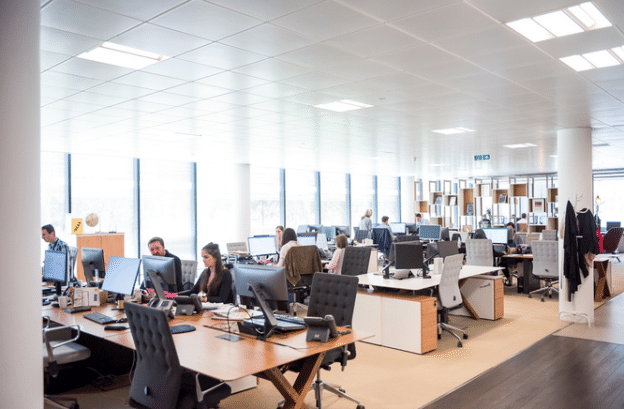In the bustling realm of business, where every moment counts towards productivity and success, the last thing anyone needs is an unwelcome guest scurrying across the office floor or finding refuge in the break room. Pests, ranging from pesky rodents to resilient insects, not only disrupt the tranquility of the workplace but also pose significant threats to the health and well-being of employees. Beyond the physical discomfort and potential property damage they bring, pests can tarnish a company’s reputation, signaling to clients and partners a lack of attention to detail and care.
Creating a workspace free from the intrusion of pests isn’t merely a matter of convenience; it’s a fundamental aspect of maintaining a healthy and thriving work environment. The implications of a pest infestation stretch far beyond the immediate inconvenience, impacting employee morale, productivity, and even the safety of the workspace. From spreading diseases to contaminating food supplies and causing structural damage, pests can wreak havoc if left unchecked.
Identifying Potential Entry Points:
Ensuring a pest-free environment begins with the crucial task of pinpointing and fortifying potential entryways. These insidious intruders can infiltrate through the tiniest crevices, and fissures around entrances, and even utilize vents and pipes as secret passages. Hence, conducting routine examinations of your property is paramount to spot these vulnerable spots, facilitating prompt rectification and reinforcement. Furthermore, the deployment of door sweeps and weather stripping adds an extra layer of defense, thwarting any pest ambitions to invade the premises. Through meticulous attention to these ingress points, the risk of a pest invasion establishing itself is markedly diminished, safeguarding your space against unwelcome occupants.
Maintaining Cleanliness and Hygiene:
Creating and maintaining a pristine workplace environment serves as a formidable barrier against unwanted intruders, namely pests, by cutting off their access to essential resources like food, water, and shelter. Enforcing a stringent cleaning protocol stands as a front-line defense against potential infestations. This entails not only the routine disposal of trash but also the meticulous storage of food items and the thorough cleansing of communal spaces such as kitchens and break rooms. Furthermore, vigilance should extend beyond indoor confines to encompass outdoor areas like landscaping and garbage disposal zones, which, when well-kept, serve to discourage pests from congregating in proximity to the premises. By placing a premium on cleanliness and upholding rigorous hygiene standards, you can fashion an environment that repels pests, ensuring the sanctity of your workplace.
Proper Waste Management:
Improper waste management is not just a mere inconvenience; it’s an open invitation for pests to make themselves at home. When garbage piles up, it becomes more than just unsightly—it becomes a buffet for unwanted critters. Moreover, those heaps of waste create perfect breeding grounds for pests to multiply and thrive, turning your space into their own personal playground.
Thankfully, there are steps you can take to thwart their plans. First and foremost, invest in sealed trash bins to keep those pesky pests out and the odors in check. But don’t stop there; make sure to empty those bins regularly, cutting off the pests’ food supply before they have a chance to feast. And when it comes to organic waste, proper disposal is key. Whether it’s through composting or other means, ensuring that organic matter is disposed of correctly can significantly reduce the attractiveness of your space to pests.
Implementing Integrated Pest Management (IPM) Strategies:
Integrated Pest Management (IPM) is a comprehensive strategy for pest control that emphasizes prevention, surveillance, and intervention. This multifaceted approach integrates various techniques including biological control, habitat manipulation, and judicious pesticide application as a last resort. The primary goal of IPM is to mitigate pest damage while safeguarding human health and the environment from the adverse effects of pest management practices.
Incorporating IPM practices within the workplace entails consistent monitoring to detect early signs of pest infestation, implementing proactive measures to prevent pest ingress, and resorting to pesticide application only when absolutely necessary and in strict adherence to safety protocols. By embracing an IPM framework, organizations can proficiently tackle pest issues while curtailing the utilization of hazardous chemical agents, thus promoting a safer and more sustainable pest management approach.
Collaborating with Professionals:
Partnering with a professional office pest control provider is essential for comprehensive pest prevention. The office pest control experts have the knowledge, experience, and resources to identify potential risk factors, implement preventive measures, and respond promptly to pest infestations. Regular inspections and treatment plans tailored to the specific needs of your workplace can help keep pests under control. Additionally, office pest control providers can offer valuable advice and recommendations for minimizing the risk of future infestations. By collaborating with office pest control, you can ensure proactive pest management and a pest-free workplace environment.
Educating Employees:
Employee education is paramount in the ongoing battle against pests. When employees are well-informed about the significance of maintaining cleanliness standards, employing proper food storage practices, and promptly alerting authorities to any signs of pest activity, they become valuable allies in upholding a pest-free workplace environment. Hosting regular training sessions and providing informative materials serve to heighten awareness regarding common pests, their behaviors, and the preventive measures that can be implemented by staff members. Furthermore, fostering a culture where employees feel empowered to promptly report any sightings or indicators of pest presence facilitates swift and effective intervention strategies. By equipping employees with the necessary knowledge and encouraging their active participation, a collaborative effort is cultivated, ensuring that pests remain effectively deterred from infiltrating the workplace.
Preventing pests from disrupting your workplace requires a proactive and multifaceted approach. By identifying potential entry points, maintaining cleanliness and hygiene, managing waste effectively, implementing integrated pest management strategies, educating employees, and collaborating with office pest control, you can create a workplace environment that is inhospitable to pests. By taking these steps, you can protect the health and productivity of your employees while safeguarding your business reputation. Remember, prevention is key to avoiding costly and disruptive pest infestations in the workplace.


